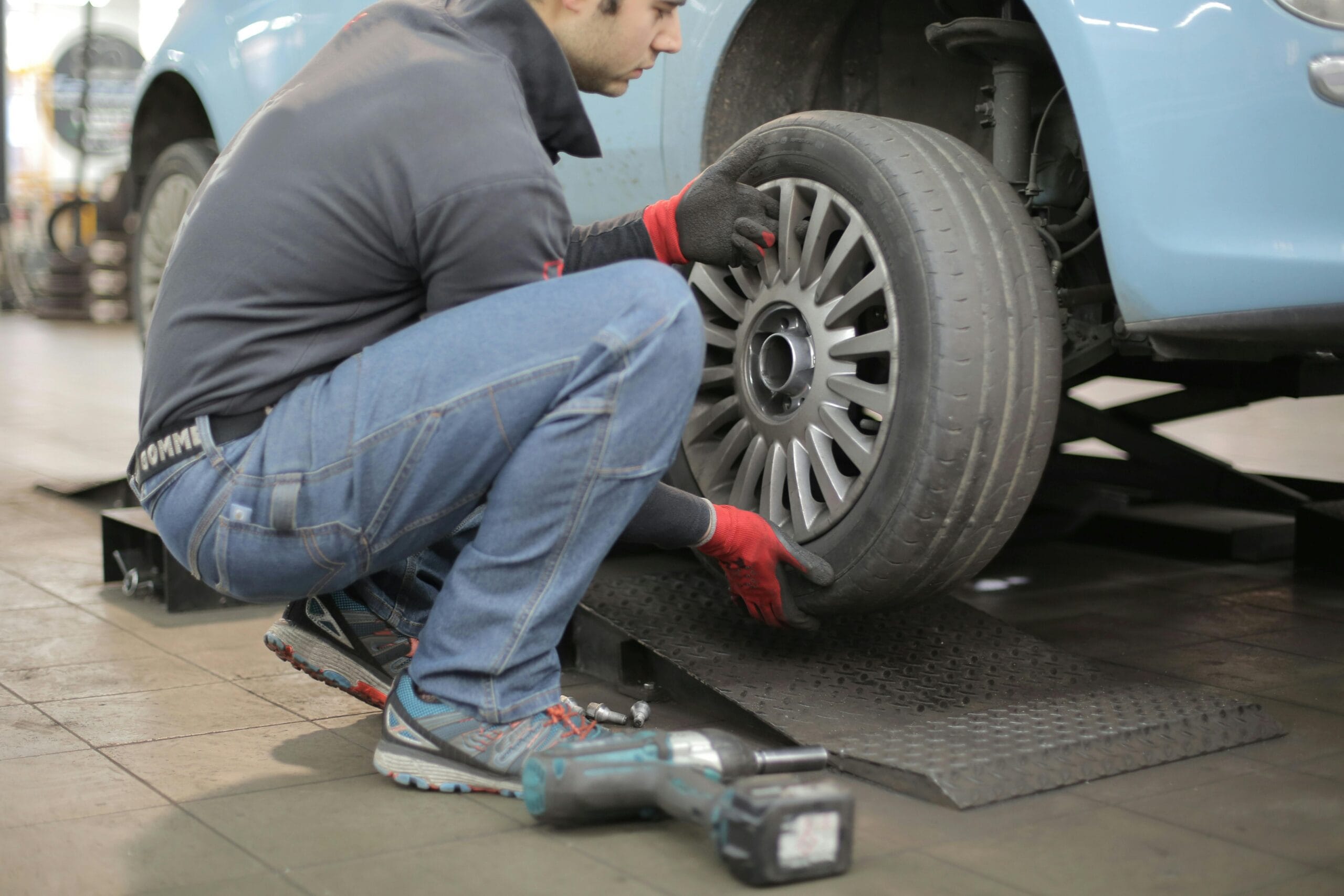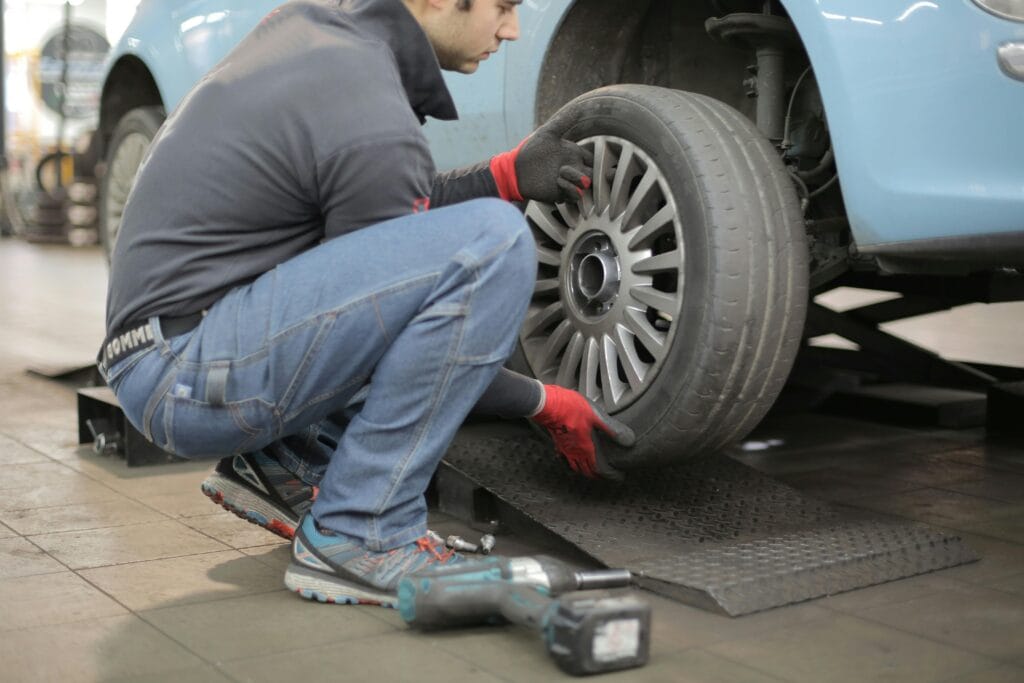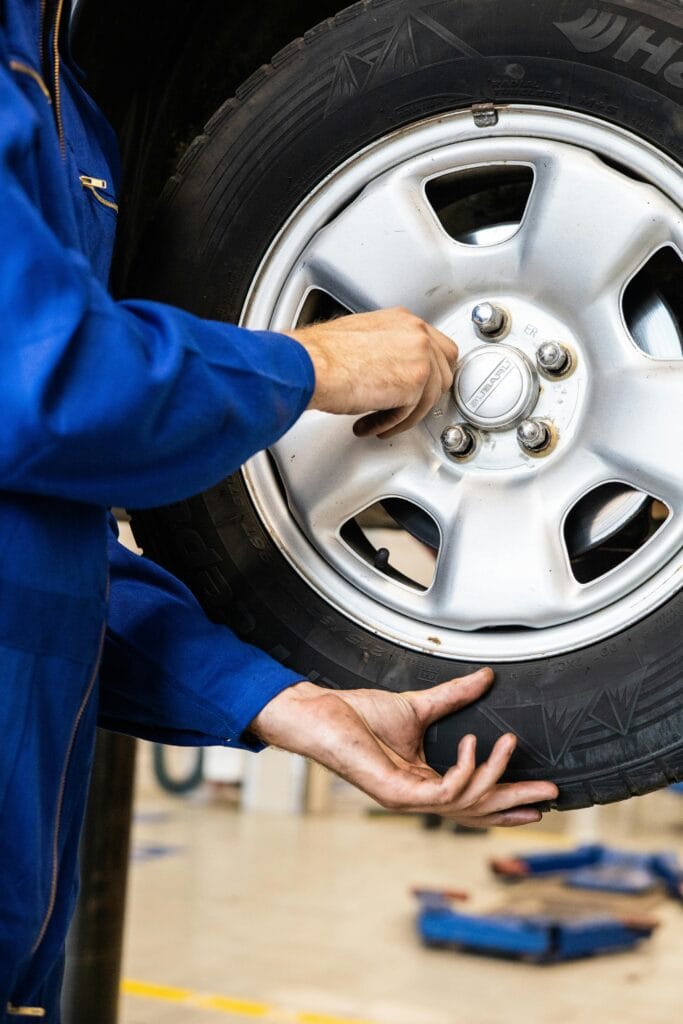
A flat tire can ruin your day — but changing one doesn’t have to. With the right steps and a little confidence, you can get back on the road in under 30 minutes.
🕒 Time required: 20–30 minutes
🧰 Tools needed:
- Spare tire
- Car jack
- Lug wrench (tire iron)
- Wheel wedges (or large rocks)
- Owner’s manual (recommended)

✅ Step 1: Find a Safe Spot
As soon as you notice the flat, slow down gradually and pull over somewhere flat and safe:
- Avoid hills, curves, or soft ground
- Turn on your hazard lights
- Apply the parking brake
🧱 Place wheel wedges behind the opposite tires to prevent rolling.

✅ Step 2: Loosen the Lug Nuts
Use your lug wrench to loosen (not remove) each lug nut on the flat tire:
- Turn counterclockwise
- You may need to use your body weight or foot for extra leverage

✅ Step 3: Raise the Vehicle
- Locate the jack point under your car (usually just behind the front tire or ahead of the rear tire — check your manual)
- Position the jack and begin lifting until the flat tire is about 6 inches off the ground

✅ Step 4: Remove the Flat Tire
- Now fully remove the loosened lug nuts
- Pull the flat tire off and set it aside flat to avoid it rolling away

✅ Step 5: Mount the Spare Tire
- Line up the holes on the spare with the bolts
- Push it on gently until snug
- Hand-tighten the lug nuts as much as possible

✅ Step 6: Lower the Car & Tighten Nuts
- Carefully lower the vehicle back to the ground
- Use your lug wrench to tighten the nuts in a star pattern (to ensure even pressure)

✅ Step 7: Check Tire Pressure & Drive Carefully
If your spare is a temporary donut, don’t exceed 50 mph and try to get a full-size tire installed ASAP.

🧠 Bonus Tip:
Check your spare tire’s air pressure at least twice a year. A flat spare is useless in an emergency.
🧼 Conclusion
Changing a flat tire may seem intimidating, but with these simple steps, you’ll be back on the road in no time — no tow truck needed.



